A mellifluous marriage of music and performance art captivated at Hotel Cracovia
© All photos by Kacper Chmura for Kraków Music
Miles Davis once said: ‘it’s not what you play, it’s what you don’t play,’ implying silence and space. And being able to work with space and silence is just as important as knowing how to fill your available sonic spectrum with sound”
— Ethan Smith
Since I attended the finissage of the Art Color Ballet exhibition in the former Hotel Cracovia on Friday October 9, I’ve been mulling over a quote mostly attributed to the late great Frank Zappa: “Talking about music is like dancing about architecture.” The large prints of the performance art group in action, spectral shapes doused in radiant plumage – both recognisably human and somewhat feral and otherworldly – provided a fitting backdrop for the audience to be regaled by Ethan Smith (Alto Sax and Flute) and Grzegorz Kosowski (Electric Guitar, Effects, Percussion, Kalimba) amid an avalanche of ambient dreamscapes, Vangelis-inspired rapture, and shoegaze-esque introspection. Yes, I knew halfway through the show that it might be a somewhat pointless task to try and capture this ethereal music in mere earthly words, but I took an audio recording of the show to mull over later. That turned out to be a good idea in retrospect; Smith and Kosowski’s music needs time to be processed, understood, its essence felt, but that should not take away from how visceral and engaging it remains. It appeals to the mind as much as the senses. My challenge had been set.
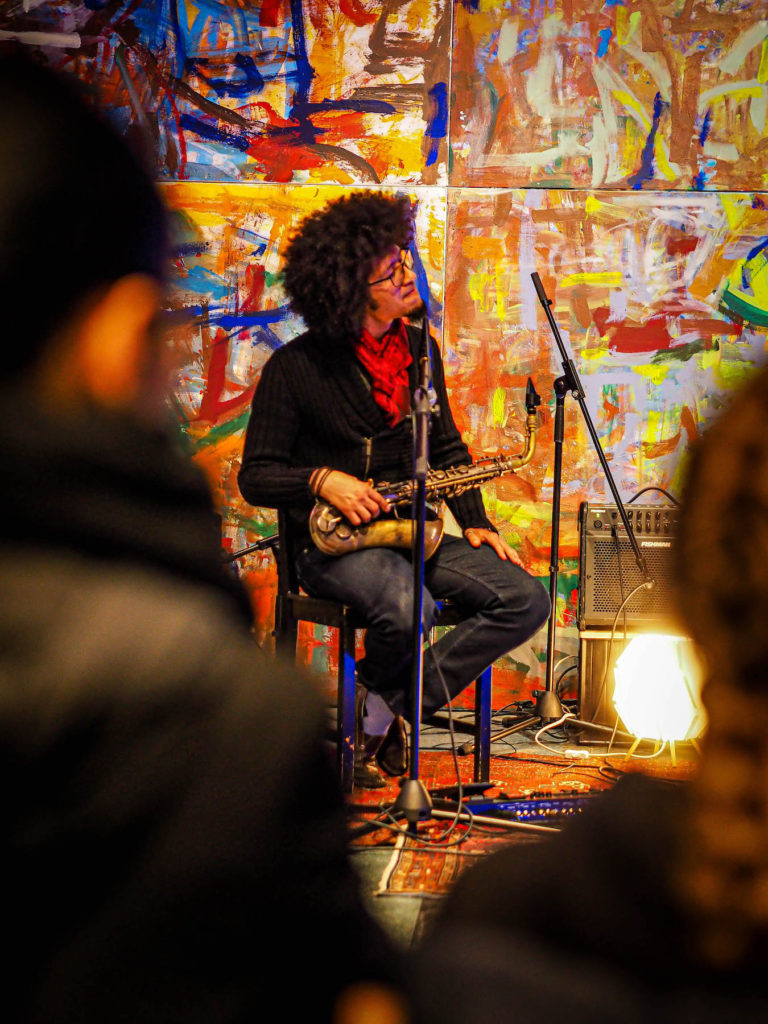

From the opening notes of the first track, the spell had already been cast. The guitar’s heavy hypnotic swells and pulses along with myriad loops all intertwine like birds migrating at dusk. The clean chime of the chords, resonating out in tandem with Kosowski’s broad atmospheric brushstrokes, all meld together in synchronicity to create the perfect canvas for Smith’s subtle contributions. We trust these musicians, as they take our hand and lead us down a path and into a lush allotment where Brian Eno is the gardener. The waspish wisps of Smith’s flute are magnificently evocative of the natural world – an innocent yet primal scene cloaked in that first blue light of dawn, vegetation soaked in dew; a grand world of untameable life and splendour, yet in the midst of some dark upheaval. By the time the sax settles like a resplendent butterfly alongside the reverb-heavy staccato delay of the guitar, it doesn’t even sound like a guitar anymore, but closer to the lullaby of a harp – soothing and placating as it wraps us in its hypnotic cotton wool embrace. There is graceful build and mature restraint here and the sound pushes out like sets of turquoise waves along the curve of a distant shoreline; it is immensely cinematic yet I wonder if the addition of actual visual footage might take away from the raw power of the imagination that this music inspires. Towards the concluding part of the first 17-minute opus, a quote from Terence McKenna – author, botanist and psychonaut – becomes audible, prodding guiltily at our collective conscience:
The artist’s task is to save the soul of mankind; and anything less is a dithering while Rome burns. Because of the artists, who are self-selected, for being able to journey into the Other, if the artists cannot find the way, then the way cannot be found.
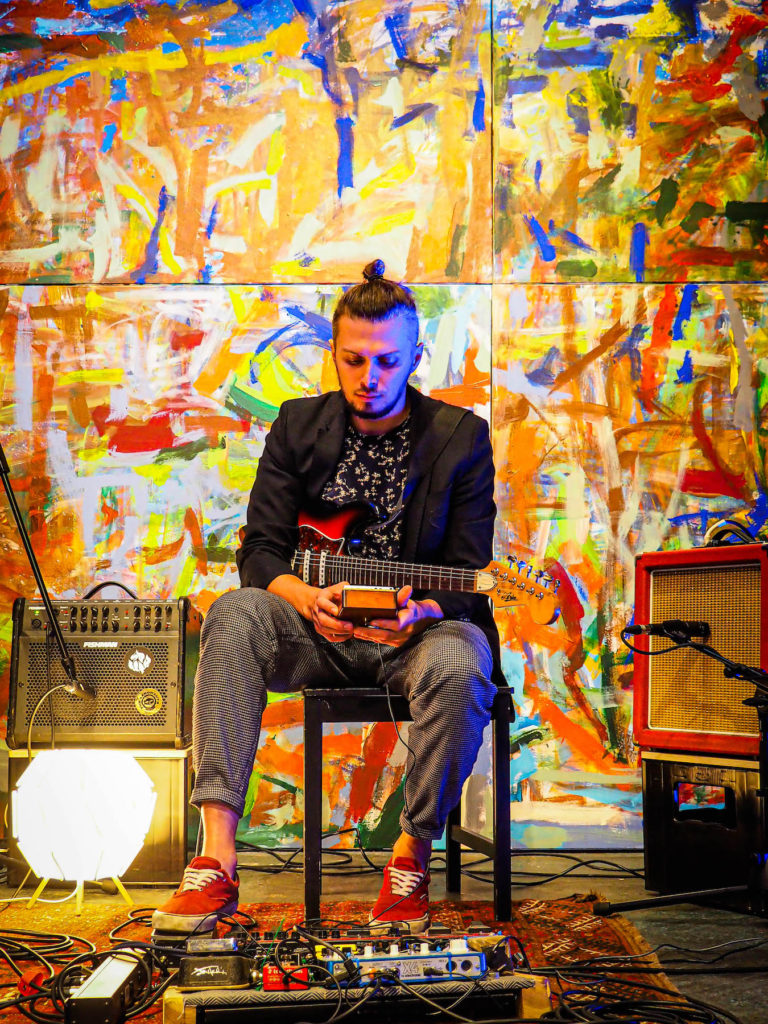
The following number, inspired by a poem of South African-born jazz musician, Abdullah Ibrahim, called “Water from an Ancient Well” starts with the delicate soothing tones of the kalimba, sparse yet fragile against that enormous African sky, slowly metamorphosing into a percussive loop that sets the firm backbone for the rest of the song; at times the guitar’s drone and tone is vaguely reminiscent of David Gilmore, however this is a reductive oversimplification as the collective sound remains distinctly their own creation.
Kombucha Song.
Smith & Kosowski
Smith tells us more about the artists’ own musical quest: “It’s slow music. I don’t mean that to only refer to the tempo and pace of the music we make, but also ‘slow’ in the sense that it is subtle, suggested, considered, pensive, with the aim to draw the listener in, to have the listener sit forward in their seat rather than to be blown back. Musicians and performers often get nervous when there is a space in the music, feeling it an absolute imperative to fill each and every crevice with sound. Music is linear most of the time. It goes from verse to chorus to bridge to the end. With the music we make, however, it’s as if one is floating, limbs-outstretched, in a cloud of sound, that’s the way I like to think of it. Still linear, yes; but now it also has an added vertical dimension, not only a horizontal one. Imagine for a moment: a square has more space inside it than a straight line does. And so having both this vertical and horizontal component allows for a ‘play with space’ rather than a forward march toward a goal.”
Towards the concluding part of the set the guitar tone becomes more muddied, buried in the lower end, and it is Smith’s wonderful saxophone work that coaxes and teases, eventually guiding us beneath the waves to an underwater Eden. Smith and Kosowski conjure an aquatic sonic landscape that evokes the plaintive and haunting cry of humpback whales; we are transported, not for the first time that evening, to a world far removed from the anxiety of coronavirus, the coming winter and all our innate fears. This is a world of sanctuary and bliss.
Theirs is a spiritual thirst. Long may they drink the water from that ancient well. I, for one, hope it does not run dry anytime soon.
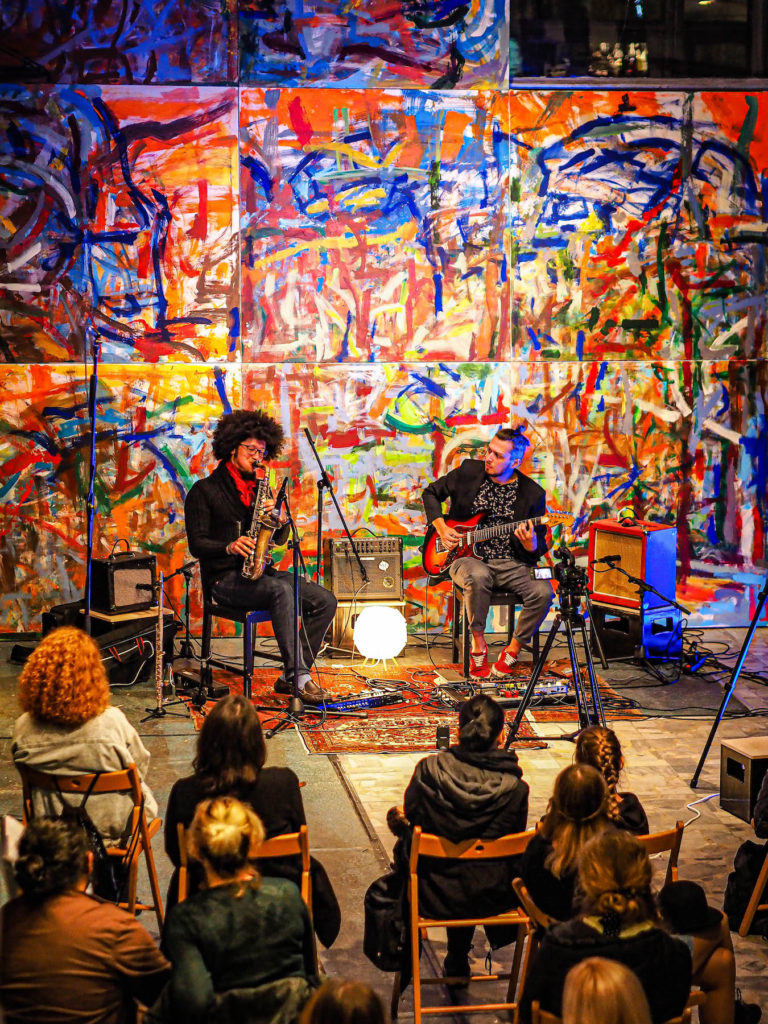
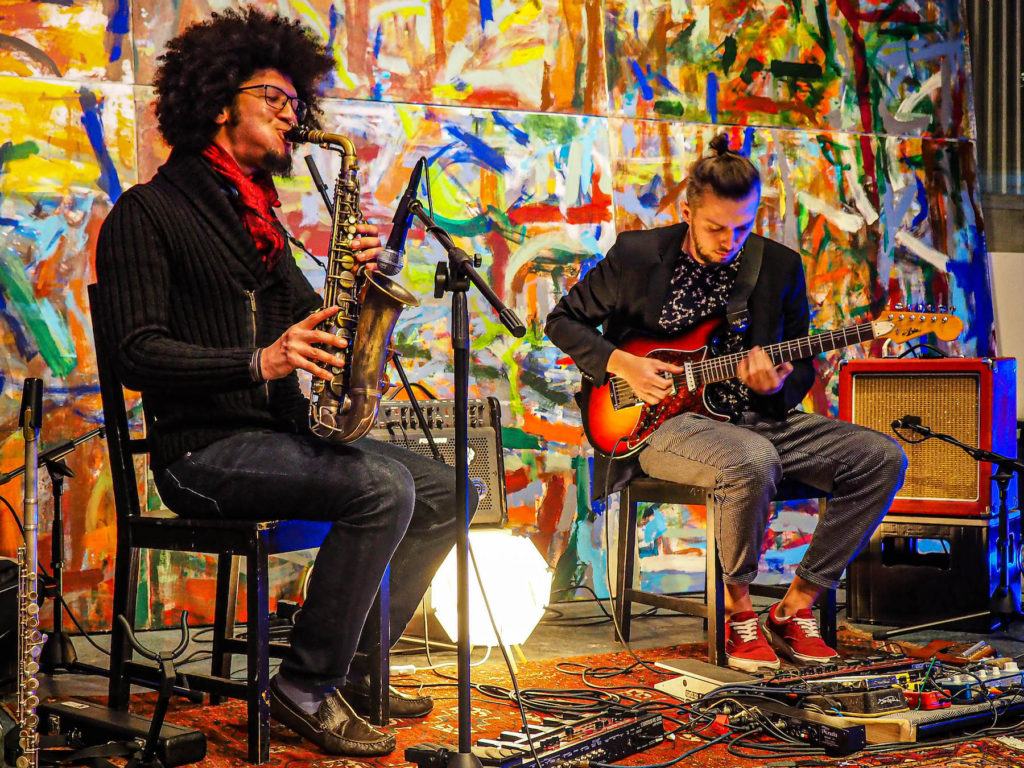
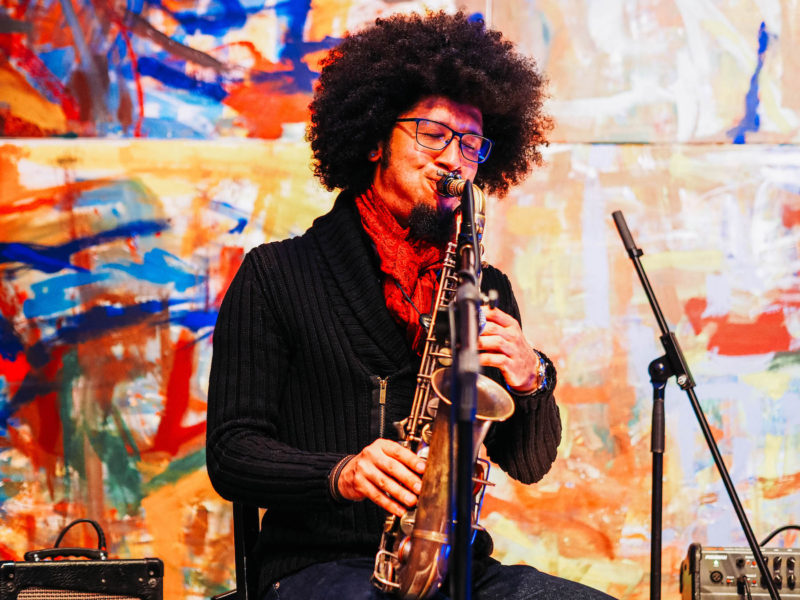
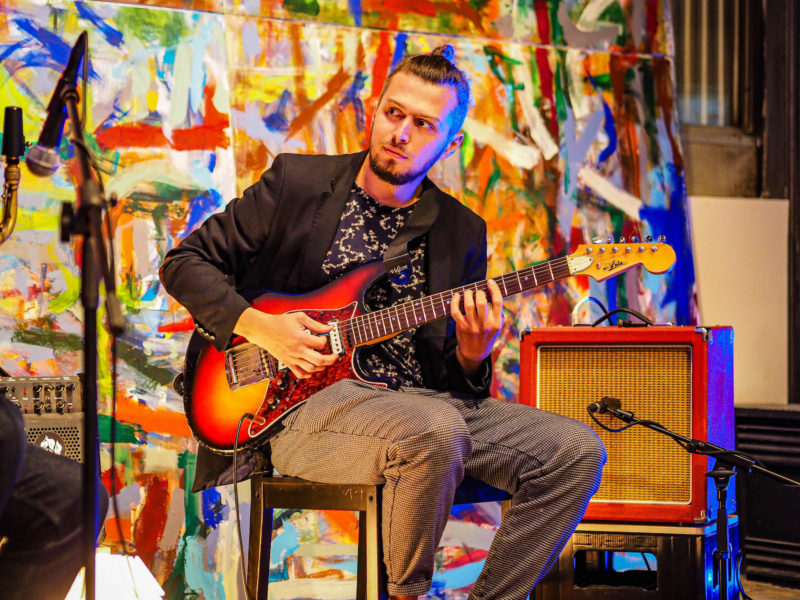
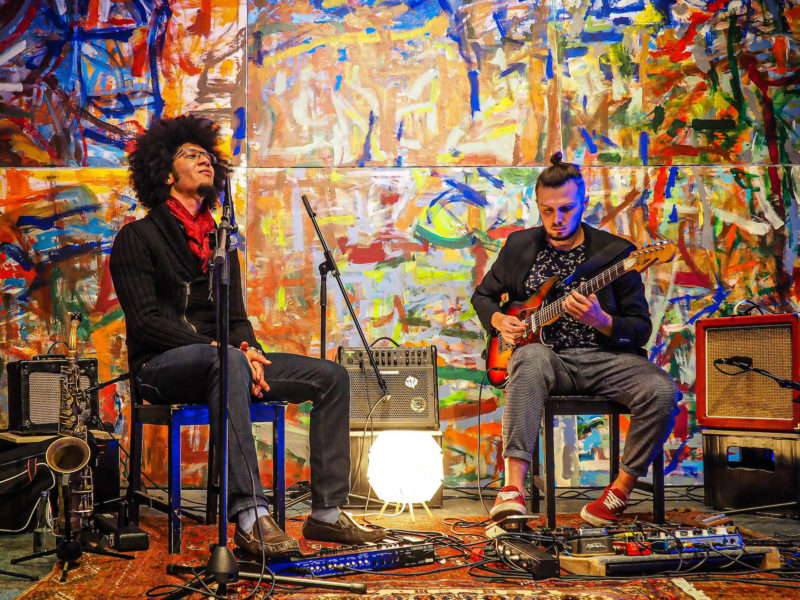
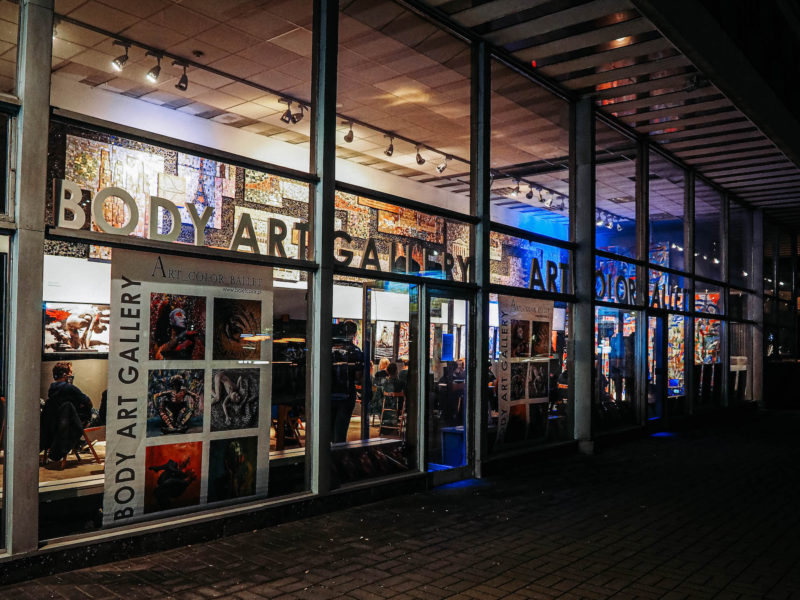
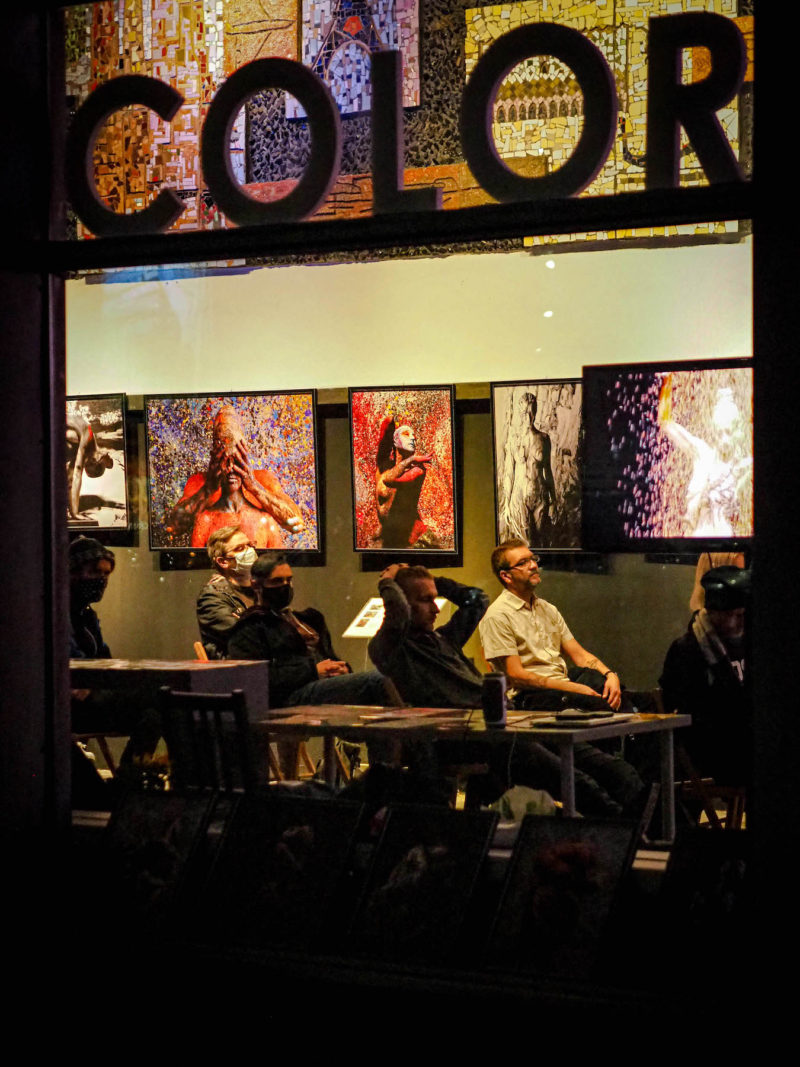
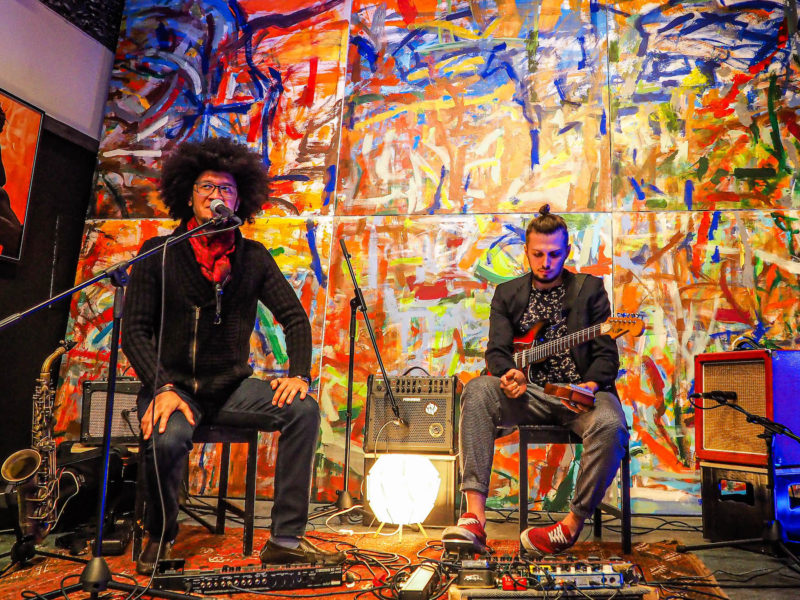
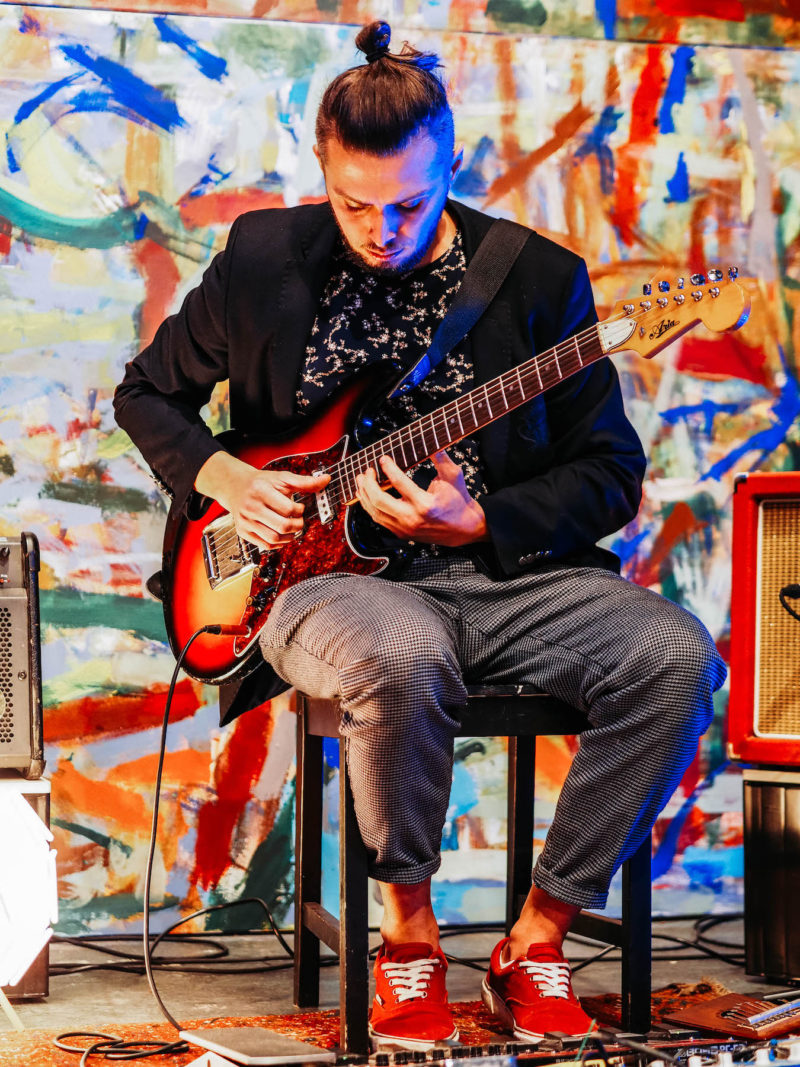
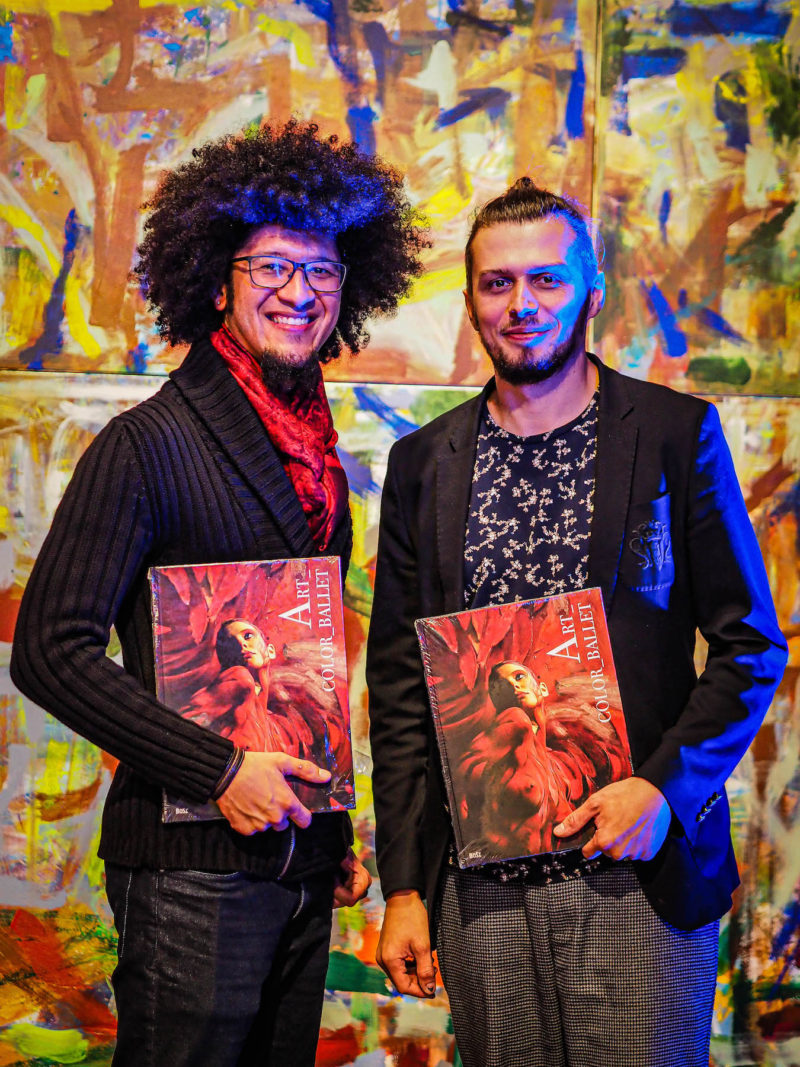
Comments
[…] Ethan Smith & Grzegorz Kosowski @Body Art Gallery […]
[…] was even more vibrant after an introduction to the Art Color Ballet, which initiated an impromptu concert by Ethan Smith & Grzegorz Kosowski at the Body Art […]
[…] to Ethan Smith’s project with guitarist Grzegorz Kosowski and read the review of their concert at the Body Art […]